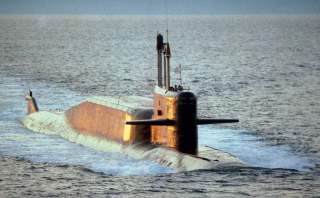5 Terrible Ways That a Nuclear War Might Actually Happen
No joke.
Unfortunately, American exercises aren’t much better. In 2006, for example, the United States conducted a drill called “Vigilant Shield” in which we were at war with an assorted group of generic bad guys, including “Ruebek,” “Nemazee” and “Churya.” (If you can’t recognize Russia, North Korea, and China, you’re not using your imagination. I suppose it was easier than calling them “Ussia-Ray” and “Orth-Nay Orea-Kay.”) In the end, America settled everyone’s hash by launching a few strategic nuclear weapons at “Ruebek,” which brought the whole mess over whatever it was to an end.
One or two nuclear bombs, apparently, are aren’t all that destructive. In fact, “Vigilant Shield” included a hypothetical enemy nuclear strike against the Pentagon (which sits within sight of the Mall and just a short distance from the White House) that only killed 6,000 people. This remarkably low figure prompted journalist and Defense Department critic William Arkin to note that two of the core assumptions in the game were obviously that “nuclear warfare can break out for no particular reason at any particular time,” and that “small nuclear weapons, while bad, don’t really kill that many people.”
Military establishments are supposed to be full of worst-case pessimists. Nuclear warfighting ideas, however, rely on incredibly optimistic assumptions about universal rationality, near-perfect information, accurate perception, the absence of panic, and an orderly ability to control escalation in the midst of chaos. Someone making those assumptions are not the people you want in the Oval Office when “Ruebek” and “Churya” are off their leashes.
Before I conclude, let me reassure you that you’re in far more danger texting – or maybe reading something like this on your phone – while driving. The odds of a nuclear war are tiny, but they exist, and if we ever draw that black lottery ticket, the consequences will defeat our imagination. That doesn’t mean we don’t need to think about them, just as we think about how to forestall other kinds of unlikely disasters, including the man-made disasters of war. Much has been accomplished, but much more can be done, especially if there is even the smallest shred of bipartisan cooperation left on a matter like this one, where the fate of the country, and of the world, is continually at stake. That kind of cooperation is unlikely in the coming few years, nor are any further treaties likely to appear on the frozen ground between Russia and America. But the weapons will wait. And they will still be here when the next President takes office and swears, as he or she will almost certainly do, to get rid of them yet again.
Tom Nichols is Professor of National Security Affairs at the Naval War College and an adjunct at the Harvard Extension School. His most recent book is No Use: Nuclear Weapons and U.S. National Security (University of Pennsylvania, 2014) The views expressed are his own. You can follow him on Twitter:@TheWarRoom_Tom. This first appeared in June 2014.
Image: Wikimedia Commons

